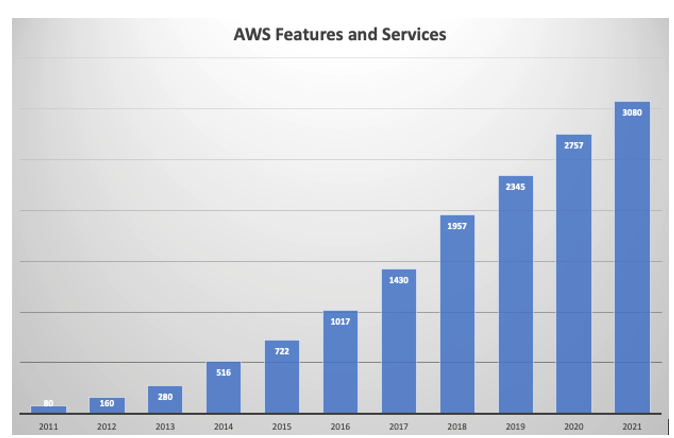Private versus public clouds
A private cloud is a service dedicated to a single customer—it is like your on-premise data center, which is accessible to one large enterprise. A private cloud has become a fancy name for a data center managed by a trusted third party. All the elasticity benefits wither away. This concept has gained momentum to ensure security. Initially, enterprises were skeptical about public cloud security, which is multi-tenant. But having your own infrastructure dimmish the value of the cloud as you have to pay for resources even if you are not running it. Let’s use an analogy to understand the private cloud further. The gig economy has great momentum. Everywhere you look, people are finding employment as contract workers. Uber drivers are setting up Airbnbs, and people are doing contract work for Upwork. One of the reasons contract work is getting more popular as it enables consumers to contract services that they may otherwise not be able to afford. Could you imagine how expensive it would be to have a private chauffeur? But with Uber or Lyft, you almost have a private chauffeur who can be at your beck and call within a few minutes of you summoning them.A similar economy of scale happens with a public cloud. You could have access to infrastructure and services that would cost millions of dollars if you bought them on your own. Instead, you can access the same resources for a small fraction of the cost.Even though AWS, Azure, GCP, and the other popular cloud providers are considered mostly public clouds. There are some actions you can take to make them more private. For example, AWS offers Amazon EC2 dedicated instances, which are EC2 instances that ensure that you will be the only user for a given physical server. Further, AWS offers AWS Outpost, where you can order server rack and host workload in your premise using the AWS control plane. Dedicated instance and Outpost costs are significantly higher than on-demand EC2 instances. On-demand instances ?? may be shared with other AWS users. As mentioned earlier in the chapter, you will never know the difference because of virtualization and hypervisor technology. One common use case for choosing dedicated instances is government regulations and compliance policies. That requires certain sensitive data to not be in the same physical server with other cloud users.Indeed private clouds are expensive to run and maintain. For that reason, many of the resources and services offered by the major cloud providers reside in public clouds. But just because you are using a private cloud does not mean that it cannot be set up insecurely and conversely. Suppose you are running your workloads and applications on a public cloud. You can use security best practices and sleep well at night knowing that you use state-of-the-art technologies to secure your sensitive data.Additionally, most major cloud providers’ clients use public cloud configurations, but there are a few exceptions even in this case. For example, the United States government intelligence agencies are a big AWS customer. As you can imagine, they have deep pockets and are not afraid to spend. In many cases with these government agencies, AWS will set up the AWS infrastructure and services on the agency’s premises. You can find out more about this here:https://aws.amazon.com/federal/us-intelligence-community/Now that we have gained a better understanding of cloud computing in general. Let’s get more granular and learn about how AWS does cloud computing.

